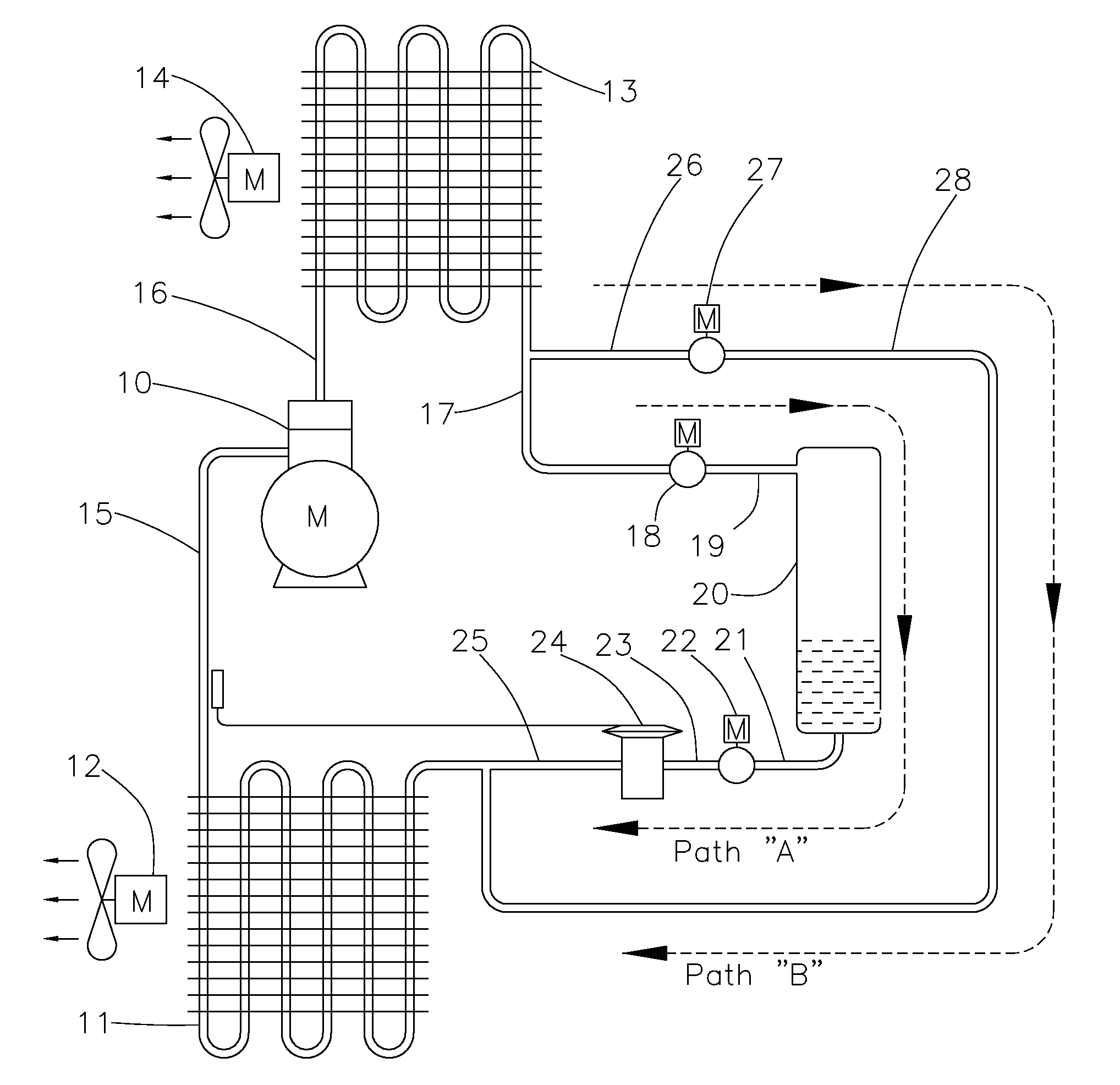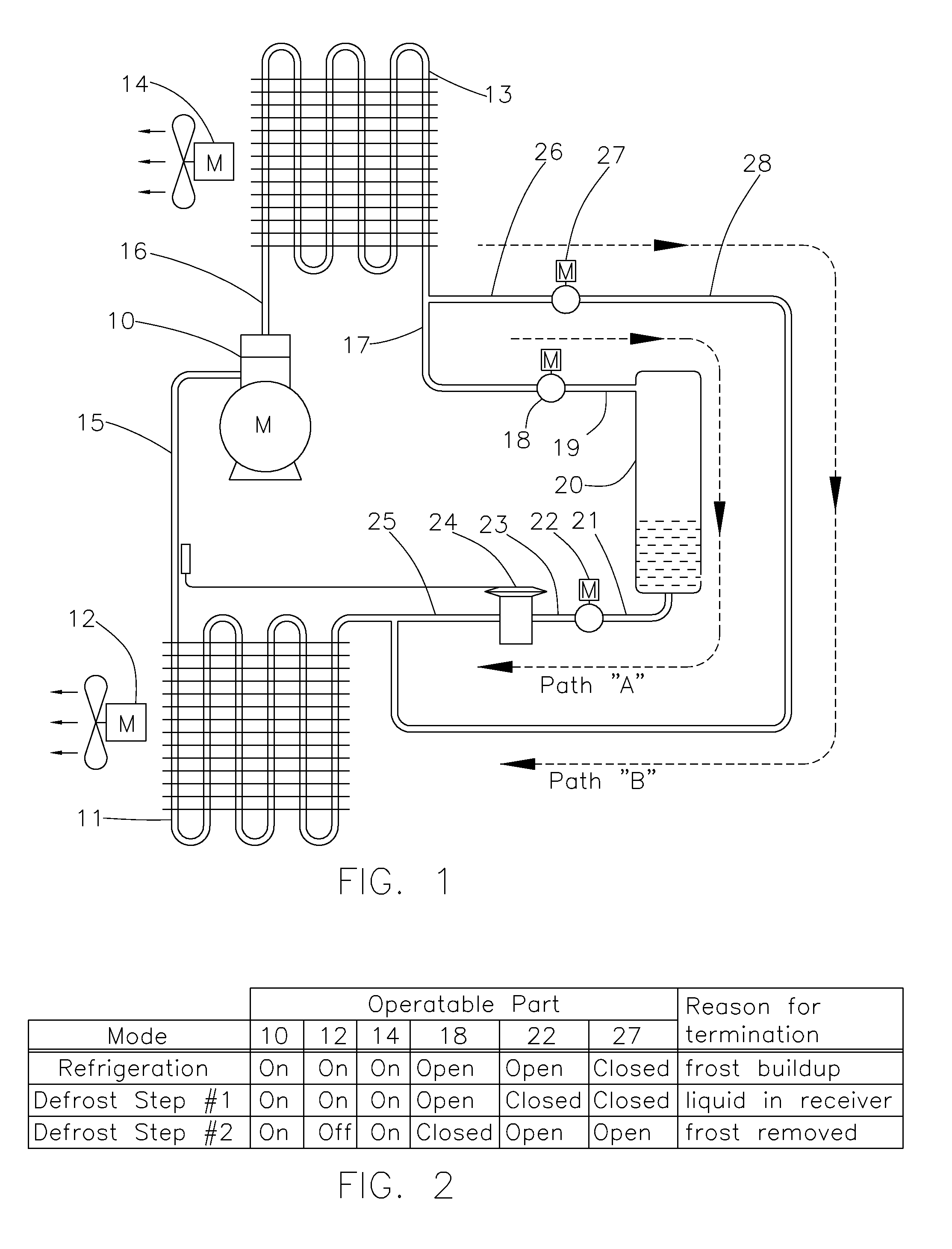Systems and methods for defrosting an evaporator in a refrigeration system
a refrigeration system and evaporator technology, applied in the field of mechanical refrigeration, can solve the problems of complex and ineffective solutions, failure to ensure that the loop contains only vapor prior to actuation, damage to the compressor, etc., and achieve the effect of minimizing the time required for defrosting the evaporator, reducing the time required for defrosting
- Summary
- Abstract
- Description
- Claims
- Application Information
AI Technical Summary
Benefits of technology
Problems solved by technology
Method used
Image
Examples
Embodiment Construction
[0033]This invention relates to the field of refrigeration utilizing a condenser which is exposed to an ambient medium warmer than the freezing point of water, and further to the field of refrigeration utilizing an evaporator operating at temperatures below the freezing point of water and finally to the field of refrigeration utilizing an evaporator which is exposed to moist air.
[0034]In FIG. 1, compressor 10 transfers refrigerant vapor from evaporator 11 to condenser 13. Evaporator 11 is connected to compressor 10 with pipe 15. Evaporator 11 is a heat exchanger which absorbs heat from the surrounding air. The surrounding air traverses evaporator 11 using fan 12. Compressor 10 is connected to condenser 13 with pipe 16. Condenser 13 is a heat exchanger which transfers heat either to or from the ambient medium. As shown by this embodiment, the ambient medium is air which traverses condenser 13 using fan 14. But other forms of ambient medium can likewise be applied without departing fr...
PUM
 Login to View More
Login to View More Abstract
Description
Claims
Application Information
 Login to View More
Login to View More - R&D
- Intellectual Property
- Life Sciences
- Materials
- Tech Scout
- Unparalleled Data Quality
- Higher Quality Content
- 60% Fewer Hallucinations
Browse by: Latest US Patents, China's latest patents, Technical Efficacy Thesaurus, Application Domain, Technology Topic, Popular Technical Reports.
© 2025 PatSnap. All rights reserved.Legal|Privacy policy|Modern Slavery Act Transparency Statement|Sitemap|About US| Contact US: help@patsnap.com


